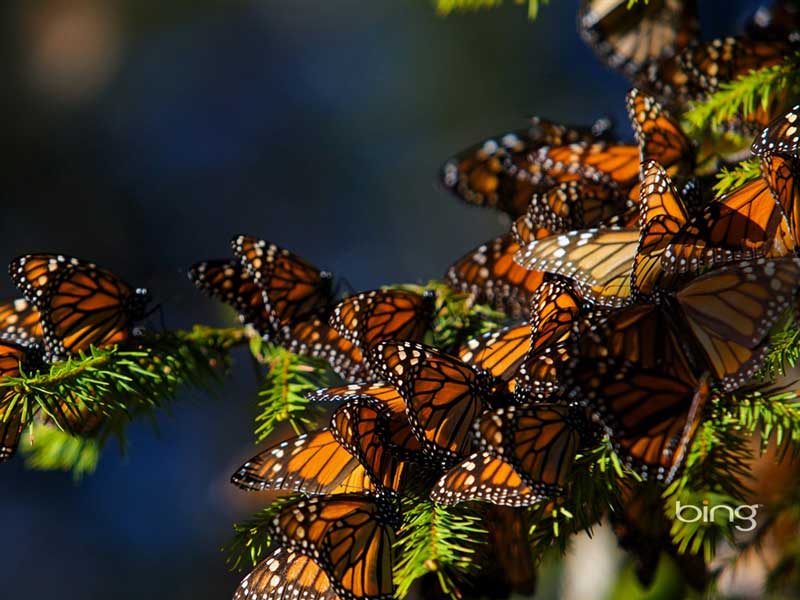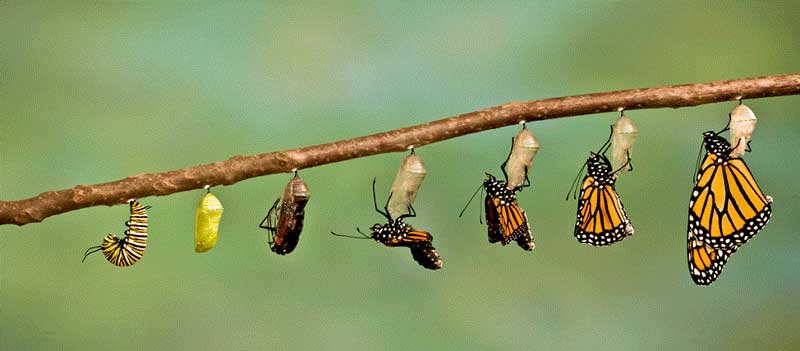RiskVA
Migrating Monarchs 12 Oct 2004
Traveling along the highway on a recent trip, we encountered a lot of Monarch butterflies flitting about. Unfortunately, many had misadjusted their altimeters and were flying so low they collided with our car. And they all seemed to be headed in the same general direction.
A peculiarity of Monarchs is that they migrate seasonally. Adult Monarchs that have emerged late in the summer don’t die after only a short time. Instead, they live as long as 8-9 months, something highly unusual for butterflies. As fall comes on, they begin flying from as far north as Canada, traveling as far as 2,000 miles through the U.S., into Mexico and Central America, often stopping at the same layover spots year after year. At their wintering locations, they frequently cover entire bushes and trees. However, in recent years, extreme cold in some of their tropical over-wintering locations has killed hundreds of thousands of them.
When spring comes, the process reverses itself as Monarchs head back to North America for the summer.
Monarch butterflies, the state butterfly of Vermont, have long been a favorite of mine. Many other people feel the same way and even plant flowers attractive to them. Monarch butterfly larvae feed on milkweed plants, devouring their leaves and tender new shoots. Not many insects do this since milkweed contains a toxic substance that sickens or kills most critters that eat it. In the case of the Monarch larvae, it is not only harmless, but it permeates their bodies and the mature butterflies that form from them later, with poison. The result is a healthy butterfly that makes birds and other predators sick if they eat it, and they quickly learn to leave it alone.
This avoidance pattern also benefits another butterfly nicely. Viceroy butterflies look virtually identical to Monarchs but are not poisonous. In fact, they are delicious. However, predators that have munched a bitter, sickening Monarch take one look at the Viceroy and give it a wide berth.
Monarch eggs are laid singly on the underside of milkweed leaves, hatching in 3-5 days into a tiny worm-like larva that immediately begins to eat its host plant. Shedding its skin four times and attaining a length of about 2 inches, the larva then transforms itself into a hard-shelled, jade green chrysalis marked with a sprinkling of gold spots.
In 10-12 days, the chrysalis becomes transparent, splits open, and a fully developed adult Monarch butterfly emerges in all its gold, yellow, and black glory. The early summer butterflies then lay more eggs, starting the life cycle over again. These early summer butterflies, unlike their later season kin, live only about a month, feeding on plant nectar before they die.
There are numerous beliefs and legends regarding Monarch butterflies. The ancient Aztecs believed they were the spirits of fallen warriors, still wearing the colors of battle. In Canada, the Monarch is called “King Billy” because orange and black are the colors of King William of Orange, a monarch during the 1600s in England.
Blackfoot Indians believed that butterflies come to us at night, carrying our dreams. Legend also has it that black butterflies symbolize death, while white ones are the souls of dead children.
The website on the Merry Monarch Butterfly Ranch on Maui, Hawaii, says “some beliefs about butterflies are that they carry messages from a soul directly to the gods, that they are signs of impending good fortune, and that they will bring conjugal [marital] bliss and joy.”
I join with them as they say, “…make a wish and send it heavenward on the wings of a butterfly.”
Dr. Risk is a professor emeritus in the College of Forestry and Agriculture at Stephen F. Austin State University in Nacogdoches, Texas. Content © Paul H. Risk, Ph.D. All rights reserved, except where otherwise noted. Click paulrisk2@gmail.com to send questions, comments, or request permission for use.



